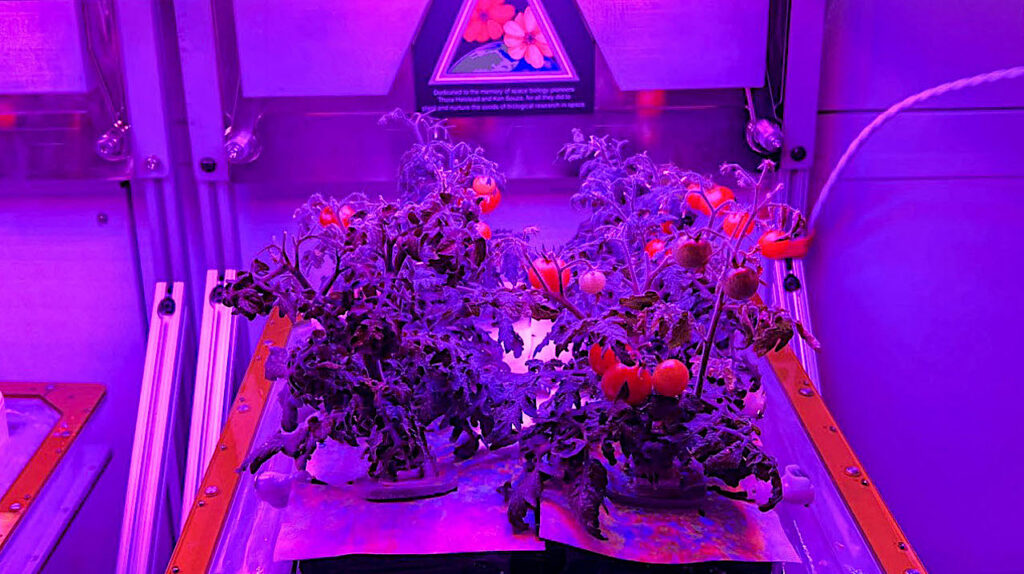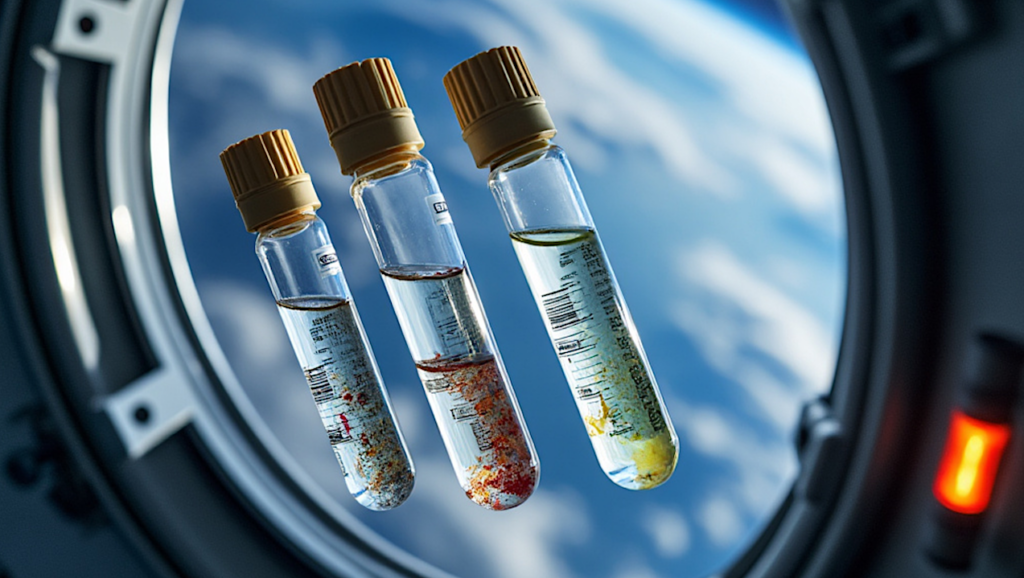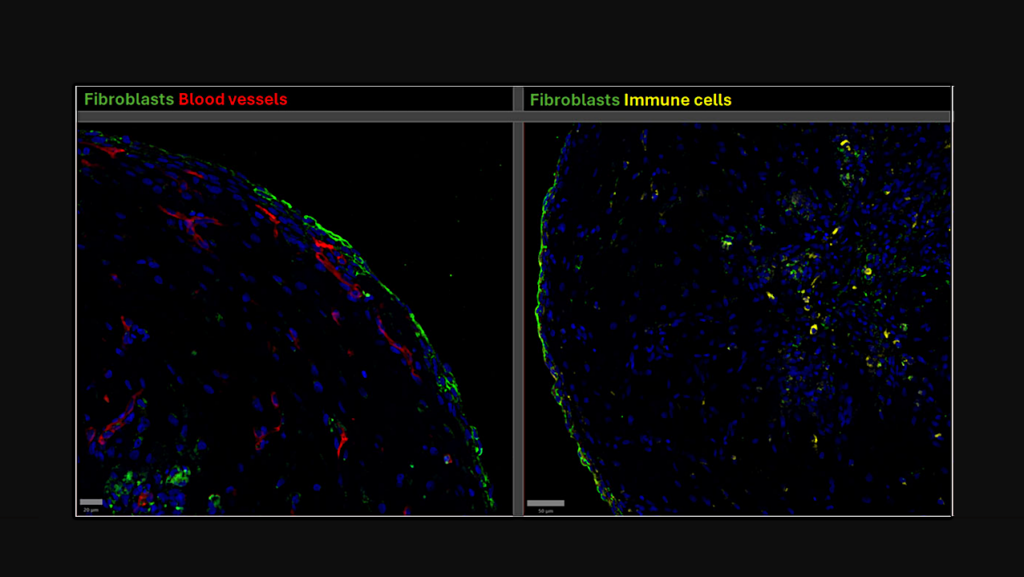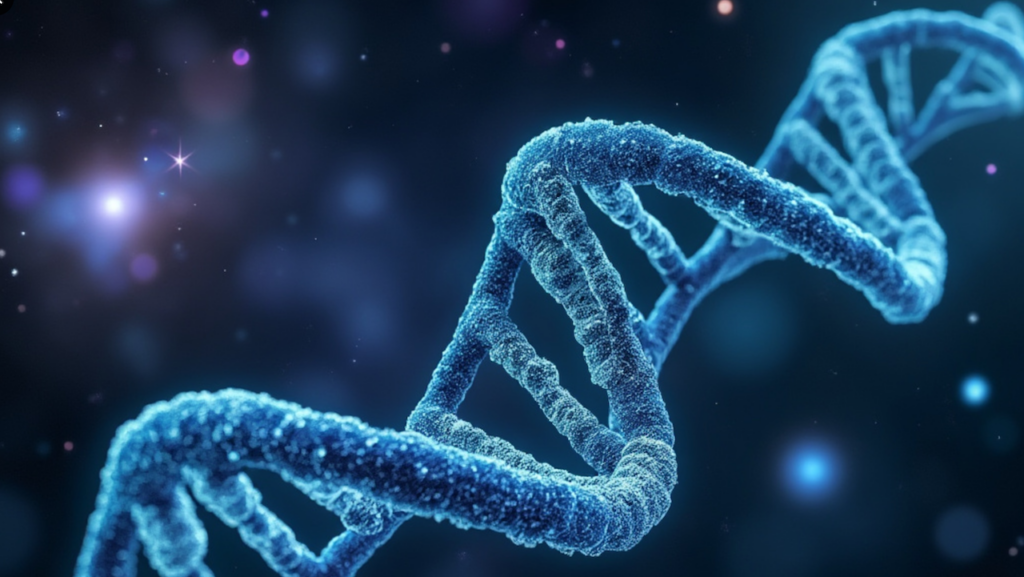NASA Spaceline Current Awareness List #1,096 19 April 2024 (Space Life Science Research Results)

Astronaut Thomas Pesquet works on the Cardinal Muscle investigation in the Life Sciences Glovebox aboard the International Space Station. Credits: NASA
The abstract in PubMed or at the publisher’s site is linked when available and will open in a new window.
Papers deriving from NASA support:
- Moudy SC, Peters BT, Clark TK, Schubert MC, Wood SJ.Development of a ground-based sensorimotor disorientation analog to replicate astronaut postflight experience.Front Physiol. 2024 Apr 17;15:1369788.Note: ISS results. This article is part of Research Topic “Space Physiology and Medicine: Reports and Unique Data Obtained on Small Sample Sizes” (https://www.frontiersin.org/research-topics/58257/space-physiology-and-medicine-reports-and-unique-data-obtained-on-small-sample-sizes#overview). The Research Topic also includes articles from previous Current Awareness List #1,077 https://doi.org/10.3389/fphys.2023.1303938 and https://doi.org/10.3389/fphys.2023.1285802. Additional articles will be forthcoming and may be found in the link to the Research Topic. This article may be obtained online without charge.
Journal Impact Factor: 4.0
Funding: “The author(s) declare that financial support was received for the research, authorship, and/or publication of this article. Funding was provided by the National Aeronautics and Space Administration (NASA). The data reported here were from the NASA Human Research Program Directed Research (#15099) Development of Sensorimotor Fitness for Duty Assessments Using Ground Analogs.” - Garcia-Medina JS, Sienkiewicz K, Narayanan SA, Overbey EG, Grigorev K, Ryon KA, Burke M, Proszynski J, Tierney B, Schmidt CM, Mencia-Trinchant NK, R., Klotz R, Ortiz V, Foox J, Damle N, Najjar D, Matei I, Chan I, Cruchaga C, Shakib L, Kim J, Lucaci A, Loy C, Mzava O, De Vlaminck I, Singaraju A, Taylor LE, Schmidt JC, Schmidt MA, Blease K, Moreno JB, A., Boddicker A, Zhao J, Lajoie B, Altomare AK, S., Kruglyak S, Levy S, Yu M, Hassane DC, Bailey SM, Bolton K, Mateus J, Mason CE.Genome and clonal hematopoiesis stability contrasts with immune, cfDNA, mitochondrial, and telomere length changes during short duration spaceflight.Precision Clinical Medicine. 2024 Apr 8.PIs: S.A. Narayanan, E.G. Overbey, C.E. MasonNote: From the introduction: “Here, we investigated immune adaptations, telomere length dynamics, cell-free DNA release, genomic stability, single-cell transcriptomic analysis, and biochemical adaptations of the I4 crewmembers traveling into lower earth orbit over the course of 3 days, to determine the effects of short-duration spaceflight.” This article may be obtained online without charge.
Journal Impact Factor: 5.3
Funding: “This study was supported by the Leukemia and Lymphoma Society (Grants No. LLS 9238-16 and MCL7001-18), the National Institutes of Health (Grants No. P01CA214274, R01CA249054 and R01MH117406), and the WorldQuant Foundation, NASA (Grants No. 80NSSC19K0432, 80NSSC22K0254, NNH18ZTT001N-FG2, NNX13AE45G, NNX14AH50G, NNX17AB26G).” - Kidane YH, Lee FH, Smith MF, Wang C, Mirza JB, Sharma S, Lobo AA, Dewan KC, Chen J, Diaz TE, Pla MM, Foster MW, Bowles DE.Proteomic and phosphoproteomic characterization of cardiovascular tissues after long term exposure to simulated space radiation.Front Physiol. 2024 Apr 16;15:1248276.PI: D.E. BowlesNote: This article is part of Research Topic “Multi-omics Approaches for Understanding Space Flight Impact” (https://www.frontiersin.org/research-topics/36594/multi-omics-approaches-for-understanding-space-flight-impact#overview). The Research Topic also includes articles from previous Current Awareness Lists #1,014 https://doi.org/10.3389/fphys.2022.971282, #1,056 https://doi.org/10.3389/fphys.2023.1215535, and #1,082 https://doi.org/10.3389/fphys.2023.1316186. This article may be obtained online without charge.
Journal Impact Factor: 4.0
Funding: “This work is supported by NASA research grant NNX16AK20G to DB, Translational Research Institute though NASA cooperative agreement NNX16AK20G to DB, and NASA research grant NSSC22K0253 to DB. MMP was supported by NIH T32HL007101.” - Kravets VG, Clark TK.An experimentally informed computational model of neurovestibular adaptation to altered gravity.Exp Physiol. 2024 Apr 16. Online ahead of print.Note: This article may be obtained online without charge.
Journal Impact Factor: 2.7
Funding: “National Aeronautics and Space Administration, Grant/Award Number: 80NSSC21K1271.” - Soares B, Ong J, Waisberg E, Sarker P, Zaman N, Tavakkoli A, Lee AG.Imaging in spaceflight associated neuro-ocular syndrome (SANS): Current technology and future directions in modalities.Life Sci Space Res. 2024 Apr 16. Online ahead of print.PI: A. TavakkoliJournal Impact Factor: 2.5
Funding: “NASA Grant [80NSSC20K183]: A Non-intrusive Ocular Monitoring Framework to Model Ocular Structure and Functional Changes due to Long-term Spaceflight.” - Coker ZN, Troyanova-Wood M, Steelman ZA, Ibey BL, Bixler JN, Scully MO, Yakovlev VV.Brillouin microscopy monitors rapid responses in subcellular compartments.PhotoniX. 2024 Apr 10;5(1):9.Note: From the abstract: “In this report, we utilize a custom multimodal spectroscopy system to monitor for the very first time the rapid viscoelastic response of cells and subcellular structures to a short-duration electrical impulse. The cytomechanical response of three subcellular structures – cytoplasm, nucleoplasm, and nucleoli – were monitored, showing distinct mechanical changes despite an identical stimulus. Through this pioneering transformative study, we demonstrate the capability of Brillouin spectroscopy to measure rapid, real-time biomechanical changes within distinct subcellular compartments. Our results support the promising future of Brillouin spectroscopy within the broad scope of cellular biomechanics.” This article may be obtained online without charge.
Journal Impact Factor: 16.5
Funding: “M.O.S. received partial funding from the Air Force Office of Scientific Research (AFOSR) Award No. FA9550-20-1-0366, Office of Naval Research Award No. N00014-20-1-2184, Robert A. Welch Foundation Grant No. A-1261. V.V.Y. received partial funding from the Air Force Office of Scientific Research (AFOSR) (FA9550-20-1-0366, FA9550-20-1-0367, FA9550-23-1-0599), the National Institutes of Health (NIH) (1R01GM127696, 1R21GM142107, and 1R21CA269099). This material is also based upon work supported by the NASA, BARDA, NIH, and USFDA, under Contract/Agreement No. 80ARC023CA002. Z.N.C. received partial support from the Consortium Research Fellows Program. Work contributed by SAIC was performed under United States Air Force Contract No. FA8650-19-C-6024. J.N.B. received funding from AFOSR (17RHCOR483 and 20RHCOR051).” - Fischetti C, Frisch E, Loesche M, Goldsmith A, Mormann B, Savage JS, Dias R, Duggan N.Space ultrasound: A proposal for competency-based ultrasound training for in-flight space medicine.West J Emerg Med. 2024 Mar 1;25(2):275-81.Note: This article may be obtained online without charge.
Journal Impact Factor: 3.988
Funding: “Select authors (Drs. Dias, Savage, Loesche and Mormann) have received funding from, are currently employed by, or receive related funding/grant support from NASA or SpaceX.” - Kim Y, Wang K, Lock RI, Nash TR, Fleischer S, Wang BZ, Fine BM, Vunjak-Novakovic G.BeatProfiler: Multimodal in vitro analysis of cardiac function enables machine learning classification of diseases and drugs.IEEE Open J Eng Med Biol. 2024 Apr;5:238-49.PI: G. Vunjak-NovakovicNote: This article may be obtained online without charge.
Journal Impact Factor: 5.8
Funding: “…The work of Gordana Vunjak-Novakovic was supported in part by the National Institutes of Health under Grant 5R01HL076485-15, in part by the National Science Foundation under Grant NSF1647837, and in part by National Aeronautics and Space Administration under Grant NNX16AO69A. …” - Langenfeld NJ, Skabelund HA, Heins R, Bugbee B.Advantages of a novel in situ pH measurement for soilless media.Front Plant Sci. 2024 Mar 26;15:1334328.Note: This article may be obtained online without charge.
Journal Impact Factor: 5.6
Funding: “This research was supported by the Utah Agricultural Experiment Station, Utah State University, and approved as journal paper number 9611; NASA, Center for the Utilization of Biological Engineering in Space (grant number NNX17AJ31G).” - Verniani A, Galvin E, Tredinnick S, Putman E, Vance EA, Clark TK, Anderson AP.Features of adaptive training algorithms for improved complex skill acquisition.Front Virtual Real. 2024 Feb 8;5:1322656.PI: A.P. AndersonNote: This article is part of Research Topic “Working Mechanisms of Design Elements to Facilitate Learning in Extended Reality” (https://www.frontiersin.org/research-topics/51041/working-mechanisms-of-design-elements-to-facilitate-learning-in-extended-reality/overview). The Research Topic also includes articles from previous Current Awareness List #1,086 https://doi.org/10.3389/frvir.2024.1322656. This article may be obtained online without charge.
Journal Impact Factor: Not available for this journal
Funding: “The author(s) declare financial support was received for the research, authorship, and/or publication of this article. This research was supported by NASA under Grant No. 80NSSC21K1140.”
Other papers of interest:
- Suh A, Ong J, Waisberg E, Lee AG.Neurostimulation as a technology countermeasure for dry eye syndrome in astronauts.Life Sci Space Res. 2024 Apr. Online ahead of print.Note: This article is an opinion/position paper.
- Ferraro S, Dave A, Cereda C, Verduci E, Marcovina S, Zuccotti G.Space research to explore novel biochemical insights on Earth.Clin Chim Acta. 2024 May 15;119673. Review.
- Dominoni A.Design for sustainability and inclusion in space: How new European Bauhaus principles drive nature and parastronauts projects.Chaum, Switzerland: Springer International Publishing, 2024.Note: This article may be obtained online without charge.
- Peng K-L, Kou IE, Chen H.Space Medicine.In: Space Tourism Value Chain: When East Meets West. Singapore: Springer Nature Singapore. 2024. p. 115-28.
- Cowburn J, Serrancolí G, Colyer S, Cazzola D.Optimal fiber length and maximum isometric force are the most influential parameters when modeling muscular adaptations to unloading using Hill-type muscle models.Front Physiol. 2024 Apr 16;15:1347089.Note: This article is part of Research Topic “Human Movement in Simulated Hypogravity – Bridging the Gap between Space Research and Terrestrial Rehabilitation” (https://www.frontiersin.org/research-topics/37230/human-movement-in-simulated-hypogravity—bridging-the-gap-between-space-research-and-terrestrial-rehabilitation#overview). The Research Topic also includes articles from previous Current Awareness Lists #1,038 https://doi.org/10.3389/fneur.2023.1062349, #1,055 https://doi.org/10.3389/fphys.2023.1212198, and #1,086 https://doi.org/10.3389/fphys.2024.1329765. This article may be obtained online without charge.
- Wang J, Xue Y, Wu B, Lei M, Ma H, He X, Tan Q, Guan J, Song W, Li R, Cui X.Toxic effect and mRNA mechanism of Moon dust simulant induced pulmonary inflammation in rats.Toxicology. 2024 Apr 15;153805.Note: From the abstract: “Moon dust presents a significant hazard to crewed Moon exploration missions, yet our understanding of its toxicity remains limited. The objective of this study is to investigate the pattern and mechanism of lung inflammation induced by subacute exposure to Moon dust simulants (MDS) in rats.”
- Nagraj S, Palaiodimos L.Patent foramen ovale and decompression illness: The present and future.Cardiology Clinics. Feb 28. Online ahead of print.
- Stieber M.Antarctica and beyond – Unconsidered expectations of leaders in small isolated environments.Acta Astronaut. 2024 Apr 16. Online ahead of print.Note: From the abstract: “The aim of this discussion is to raise awareness on the danger of leaders being overtaxed when expectations are excessive; not compatible and do not correspond to leader’s nature, or even when there is an excessive expectation of performance.”
Astrobiology, space biology, space life science,








